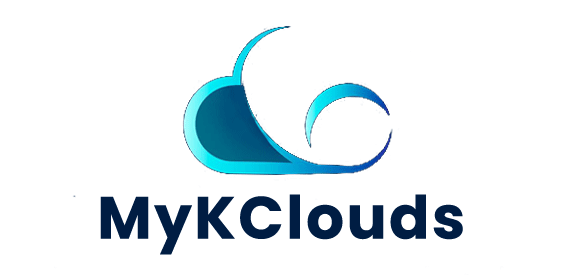
As businesses increasingly migrate to the cloud, the need for robust security measures has never been more critical. Cloud computing offers unparalleled flexibility, scalability, and cost savings, but it also introduces new risks and vulnerabilities that organizations must address to protect their data and maintain customer trust. This article explores the key aspects of cloud security and provides insights into how businesses can safeguard their operations in the digital age.
Understanding Cloud Security: The Basics
Cloud security refers to the technologies, policies, controls, and services that protect cloud-based systems, data, and infrastructure. Unlike traditional on-premises security, cloud security must address the unique challenges of a distributed, virtualized environment where data is stored, processed, and accessed from various locations and devices.
The shared responsibility model is a fundamental concept in cloud security. In this model, cloud providers are responsible for securing the infrastructure that runs all the services, while customers are responsible for securing the data they store and manage within the cloud. This division of responsibilities means that businesses must actively engage in securing their cloud environments.
Key Threats to Cloud Security
Several threats can compromise cloud security, making it essential for businesses to stay vigilant and proactive. Here are some of the most common threats:
Data Breaches
Data breaches remain one of the most significant threats to cloud security. According to IBM’s Cost of a Data Breach Report 2023, the global average cost of a data breach reached $4.45 million, with cloud-based breaches taking longer to detect and contain compared to traditional breaches. Data breaches can occur due to weak access controls, unencrypted data, or vulnerabilities in cloud applications.
Misconfigured Cloud Settings
Misconfigurations are one of the leading causes of cloud security incidents. A report by Trend Micro found that 93% of cloud security incidents were due to misconfigurations. Improperly configured storage buckets, databases, or access controls can expose sensitive data to unauthorized users or the public internet.
Insider Threats
Insider threats continue to be a concern, with the 2023 Insider Threat Report from Cybersecurity Insiders noting that 68% of organizations feel vulnerable to insider attacks. Employees or contractors with access to cloud resources can intentionally or unintentionally compromise security, resulting from malicious actions, negligence, or inadequate access controls.
Denial of Service (DoS) Attacks
DoS attacks frequently target cloud services, where attackers overwhelm cloud infrastructure with excessive requests, rendering services unavailable to legitimate users. According to Cloudflare’s DDoS Attack Trends report, the first quarter of 2023 saw a 79% increase in the number of DDoS attacks compared to the previous year, highlighting the growing threat to cloud environments.
Malware and Ransomware
Malware and ransomware attacks continue to be a significant threat, with Sophos’s 2023 State of Ransomware report revealing that 66% of organizations experienced a ransomware attack in the last year. In cloud environments, such attacks can spread quickly, encrypting or corrupting data and demanding ransom payments for recovery.
Best Practices for Enhancing Cloud Security
To protect your business from the threats mentioned above, it’s crucial to implement best practices for cloud security. Here are some key strategies to consider:
- Implement Strong Access Controls: Use multi-factor authentication (MFA) and role-based access controls (RBAC) to ensure that only authorized users can access sensitive data and resources in the cloud. Regularly review and update access permissions to minimize the risk of insider threats.
- Encrypt Data at Rest and in Transit: Encryption is a critical component of cloud security. Ensure that all sensitive data is encrypted both at rest (when stored) and in transit (when being transmitted over networks). This reduces the risk of unauthorized access, even if data is intercepted or compromised.
- Regularly Monitor and Audit Cloud Environments: Continuous monitoring and auditing of cloud environments help detect and respond to security incidents promptly. Use automated tools to monitor for unusual activity, unauthorized access, and configuration changes. Regular audits can also identify potential vulnerabilities and misconfigurations.
- Implement a Robust Incident Response Plan: In the event of a security breach or attack, having a well-defined incident response plan is essential. This plan should outline the steps to take in the event of an incident, including communication protocols, containment strategies, and recovery procedures.
- Use Secure Cloud Services: Choose cloud providers that offer built-in security features and compliance with industry standards. Providers like AWS, Microsoft Azure, and Google Cloud offer robust security tools, including encryption, identity management, and threat detection services. Ensure that your cloud provider meets your specific security and compliance requirements.
- Conduct Regular Security Training: Educate your employees about cloud security best practices and the latest threats. Regular security training can help prevent accidental security breaches caused by human error and raise awareness of potential risks.
The Role of Compliance in Cloud Security
Compliance with industry regulations and standards is a critical aspect of cloud security. Many industries, such as healthcare, finance, and government, have strict regulations governing the storage and processing of sensitive data. Failure to comply with these regulations can result in severe penalties and reputational damage.
When migrating to the cloud, businesses must ensure that their cloud provider complies with relevant regulations, such as the General Data Protection Regulation (GDPR), the Health Insurance Portability and Accountability Act (HIPAA), and the Payment Card Industry Data Security Standard (PCI DSS). Additionally, businesses should implement their own compliance measures to meet regulatory requirements and protect customer data.
How MyKcloud Can Help Your Business Secure Its Cloud Environment
At MyKcloud, we understand the complexities and challenges of securing cloud environments. As a Cloud Consulting company based in Manitoba, MyKcloud is dedicated to helping businesses navigate the intricacies of cloud security with tailored solutions that address their unique needs.
Our team of experts provides comprehensive cloud security services, including vulnerability assessments, encryption strategies, access management, and compliance consulting. We work closely with our clients to identify potential security risks and implement robust security measures that safeguard their data and operations.
Whether you’re migrating to the cloud for the first time or looking to enhance your existing cloud security posture, MyKcloud has the expertise and tools to help you achieve your security goals. We are committed to empowering businesses with the knowledge and resources they need to thrive in today’s digital landscape.
Securing Your Future in the Cloud
Cloud security is an essential component of any modern business strategy. As organizations continue to embrace the cloud, understanding and addressing the unique security challenges of cloud computing is critical to protecting data, maintaining customer trust, and ensuring business continuity. By implementing best practices and partnering with experts like MyKcloud, businesses can confidently navigate the complexities of cloud security and build a secure, resilient foundation for future growth. In the digital age, safeguarding your business in the cloud is not just an option—it’s a necessity. Let MyKcloud help you secure your future in the cloud, ensuring that your business remains protected and poised for success.

